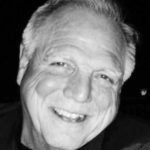Podcast: Play in new window | Download | Embed
Subscribe: RSS
Podcast (parenting-with-a-story-podcast-series): Play in new window | Download | Embed
Subscribe: RSS
The most unforgettable lesson I ever learned in school was when four masked gunmen burst into my high school history class.
 It was the first day of classes my junior year in a small-town high school in Arkansas in 1983 – Jim Owen’s World History class. Mr. Owen had a reputation for being one of the toughest teachers at school, but also one of the best. Class started the way most others do on the first day: The teacher introduced himself, explained what the class was about, how many tests there would be, how the grading would work, and so on. About 20 minutes into class, four teenaged boys burst into the room, all wearing ski masks and brandishing weapons.
It was the first day of classes my junior year in a small-town high school in Arkansas in 1983 – Jim Owen’s World History class. Mr. Owen had a reputation for being one of the toughest teachers at school, but also one of the best. Class started the way most others do on the first day: The teacher introduced himself, explained what the class was about, how many tests there would be, how the grading would work, and so on. About 20 minutes into class, four teenaged boys burst into the room, all wearing ski masks and brandishing weapons.
Nobody move!” they shouted.
They went directly to the front where they knocked Mr. Owen to the ground, relieved him of his wallet, stole the grade book off his desk, and left as quickly as they came in. It was all over in less than 15 seconds, leaving the students paralyzed in shock.
When the dust settled, Mr. Owen rose to his feet. “I’m fine,” he said. “Is everyone okay?” We assured him we were. Then he said, “Relax. That was staged. Those were my students from last year.”
“Your first assignment,” he continued, “is to take out a sheet of paper and write down everything that just happened in as much detail as possible.”
Still somewhat in shock, we all complied. A few minutes later, he asked us to hand in our papers. He then stood at the front of the class and read each one aloud. And that’s when the biggest shock of that fourth-period class hit us. The stories were astonishing in their differences in the account of the facts. Most claimed there were four boys; some claimed there were three. Some said there were three boys and one girl. One said the weapons were all real guns; most said they looked like plastic water pistols painted black. Some insisted Mr. Owen had been hit during the mugging. Most said he wasn’t touched at all. Mr. Owen continued to read while we sat and listened.
When he’d finished the last one, he put our papers down and said, “History will always be recorded from the perspective of the people who write it. As we’ve just seen, that can be very different, depending on the author. The victors in war will remember things differently than the vanquished. The groups in political power will surely see things differently from those not in power. Please keep that in mind as we begin our journey through world history. Now . . . open your books, and turn to chapter one.”
The lesson
That was 32 years ago. But I remember it like it was yesterday. Studying history taught many important lessons that year. But the most valuable and lasting one may have been learned on that first day. History isn’t a series of blind facts registered by an unbiased cosmic recording device. It’s a string of very personal events experienced by emotional, fallible, human beings. If you want to understand what really happened and how it impacted people, whether it was a hundred years ago or earlier this morning, you might need more than one source. And for the sources you do use, it might behoove you to know a little about who they are and why they might have seen things the way they did.
As you might imagine, Mr. Owen had to discontinue his annual dramatization after the tragic shootings at Columbine High School in 1999 made such a specter all too real. But his lesson has remained with the hundreds of students lucky enough to call him their teacher. Jim Owen taught for 38 years before losing a battle with cancer on August 1, 2013. But this lesson is one of the many legacies he left for a generation of young minds. Thank you Mr. Owen – for caring enough about us, and about history, to make sure we learned how to study it well.
As with all these stories, I encourage you to share this with your kids, and then have a discussion about it. Here are some questions to get you started.
- Have you ever gotten into a disagreement with a brother or sister about what happened? What was it about? Why do you think they recounted it differently than you did?
- At the time of your argument, did you think they were lying about it? What do you think now? Is it possible they just honestly remembered it differently? Is it possible they actually experienced it differently than you?
- Have you ever told your kids the story of the blind men and the elephant? If not, share it now. Then ask them, is it possible in your argument with your sibling that both of you were right?
[You can find over 100 other character-building stories in my book, Parenting with a Story.]
—
 Paul Smith is one of the world’s leading experts on business storytelling. He’s a keynote speaker, storytelling coach, and bestselling author of the books Lead with a Story and Parenting with a Story.
Paul Smith is one of the world’s leading experts on business storytelling. He’s a keynote speaker, storytelling coach, and bestselling author of the books Lead with a Story and Parenting with a Story.

 Connect with him via email here.
Connect with him via email here.
Follow him on Facebook, LinkedIn, Twitter.
Sign up for his newsletter here to get one new story a week delivered to your inbox.


